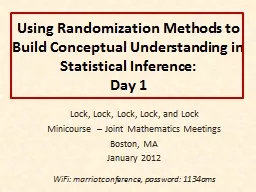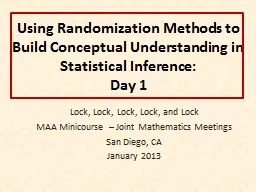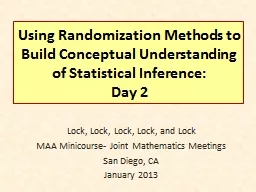PPT-A PRACTICAL GUIDE TO RANDOMIZATION IN CLINICAL TRIALS
Author : susan | Published Date : 2024-02-09
Why it Matters How it Affects Power and How to Generate a Randomization List Brian Ronayne Research Statistician nQuery Webinar Host Agenda Randomization in Clinical
Presentation Embed Code
Download Presentation
Download Presentation The PPT/PDF document "A PRACTICAL GUIDE TO RANDOMIZATION IN CL..." is the property of its rightful owner. Permission is granted to download and print the materials on this website for personal, non-commercial use only, and to display it on your personal computer provided you do not modify the materials and that you retain all copyright notices contained in the materials. By downloading content from our website, you accept the terms of this agreement.
A PRACTICAL GUIDE TO RANDOMIZATION IN CLINICAL TRIALS: Transcript
Download Rules Of Document
"A PRACTICAL GUIDE TO RANDOMIZATION IN CLINICAL TRIALS"The content belongs to its owner. You may download and print it for personal use, without modification, and keep all copyright notices. By downloading, you agree to these terms.
Related Documents














